Learn the different factors which affect our thermal comfort in buildings and how we control these conditions using HVACR. We also look at how to optimise the design and efficiency of our built environment using CFD simulations. FREE SimScale account (https://www.simscale.com/) Scroll to the bottom to watch the YouTube video tutorial
🏆 Create a free SimScale account to test the cloud-based simulation platform here: Link
With 150,000+ users worldwide, SimScale is a revolutionary cloud-based CAE platform that gives instant access to CFD and FEM simulation technology for quick and easy virtual testing, comparison and optimization of designs in several industries, including HVAC, AEC, electronics, and turbomachinery.
- Discover free recorded webinars on different topics, including ventilation, electronics, wind engineering, aerospace, automotive, and turbomachinery here:
- Find thousands of ready-to-use simulation templates created by SimScale’s users which you can copy and modify for your own analysis: Click here
- Read about pricing here
We’ve all experienced it. We’ve sat in a classroom or office which was so hot and stuffy that you found it hard to concentrate and started falling asleep. Or maybe you’ve sat in a station or terminal which was breezy and cold. These are both examples of bad thermal comfort.
We construct buildings all over the planet to shelter us from the elements and allow us to do specific tasks. We engineer these buildings to control the internal environment. Each building has a different purpose and so the design of the internal environment will be slightly different.
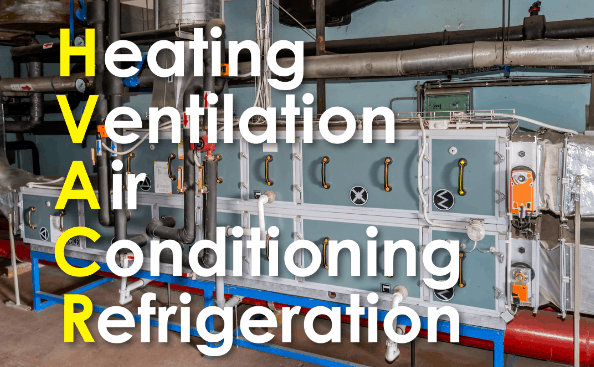
We control this internal environment through HVAC or H.V.A.C.R which is Heating Ventilation Air Conditioning and Refrigeration. These systems can range from a small air conditioning unit for a home or apartment up to enormous multi chiller and boiler systems for sky scrapers. All of these system have one purpose, to control and maintain thermal comfort of the occupants, and equipment, within the space.
What makes a room comfortable?
When we consider what makes a room comfortable, we tend to think of temperature first. That’s true but there’s other things we need to consider also like:
- Humidity
- Air velocity
- Radiant temperature
- Metabolic rate
- Clothing.
We’ll go through each of these a little later into the article and discuss how they impact our built environment.
If we think about times when we’ve been in a room which was uncomfortable, the air was too hot or too cold, the humidity probably too high, the air circulation was either not enough or far too much. These are the things we remember.
We can simulate and compare the performance of different designs quickly and easily using CFD or computational fluid dynamics. These simulations on screen were produced using a revolutionary cloud-based CFD and FEA engineering platform by SimScale, who have kindly sponsored this tutorial. Again, you can get a free account by clicking here Link
Temperature
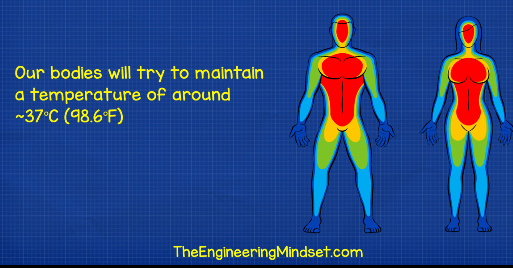
The temperature of a room is one of the most noticeable factors in comfort. Our bodies will try to maintain a temperature of around 37°C (98.6°F), this is to keep our internal organs functioning optimally. If our core body temperature deviates from this by just a few degrees, our bodies will begin to fail, we lose consciousness, go into cardiac arrest which can lead to brain damage and even death.
If we compare the two office designs for temperature distribution, the first (bad) room design has three inlets at the top right with two outlets on the bottom left. The second (good) uses only one inlet and the two outlets have been moved under the inlets. The occupants are sitting at desks in the centre of the room.
As we look at the temperature of the air we see the cold air is flow out of the inlets. In the bad design the cold air is pouring down directly onto an occupant. In the good design we see that the cold air distribution is spread across the upper region of the room giving a more stable and equal environment.
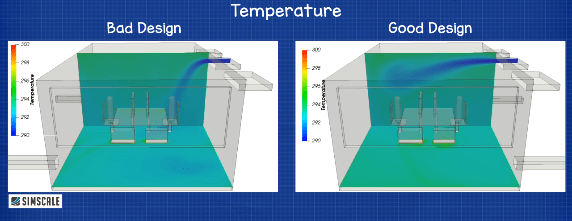
In the bad design, the person on the left might be quite comfortable but the person under the discharge is going to feel very cold and will probably become unwell. In the good design, the both occupants will experience the same thermal conditions.
Why does temperature matter?
When we are too hot our bodies will sweat, this liquid will form a thin layer over our skin which will evaporate. As it evaporates it will carry the heat away and cool us down. When we get too cold our bodies will shiver, this causes rapid movement of the muscles which will generate heat to warm us up. So we need to be in a room which is not too hot or cold.
As a rule of thumb, occupants will feel comfortable when the room temperature is around 20-22 ° C (68-72 ° F) but this will vary depending on things such as the activity of the person and what they’re wearing.
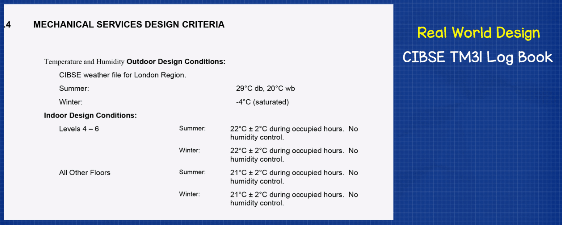
To give you an example of a real world design, this is an extract from a CIBSE TM31 Building log book for an office in London. You can see the building was designed for outside conditions in the summer of 29 ° C and negative 4 ° C in the winter. The office area within the building is designed to be 22 ° C with a 2 degree buffer, which means it can be 20 – 24 ° C. This one has no humidity control, we’ll look at that later.
If you want to get deep into the details of design then ASHRAE 55 and CIBSE Guide A are some of the most widely used industry guides for thermal design. I’ll leave some links in the video description for those.
Velocity
Air velocity is another aspect which will make a big impact to a persons comfort levels. The faster the air moves, the greater the heat exchange will be.
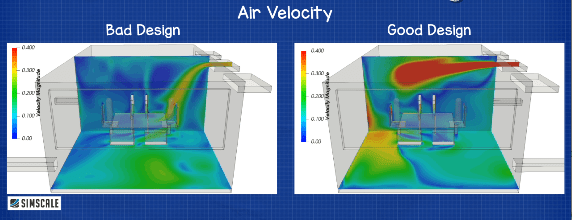
As we see in the bad design, the person on the right won’t be comfortable because the air is moving fast over them and so the heat is going to be leaving their body rapidly.
In the improved design we have a high velocity over the top of the occupants but this time it isn’t falling directly onto them. The left occupant might just feel this on their head and probably so if they stood up. There’s also a high velocity region around the ankles so some improvements could still be made for the location and quantity of the grilles.
As a rule of thumb Air speeds of up to 0.8m/s are allowed without local control and 1.2m/s with local control are allowed. Moving air creates noise too so that’s also something to consider. There are design limitations for ductwork velocity, we’ve covered this is our previous tutorial where we designed a simple ductwork system.
Humidity
When we talk about humidity we’re talking about the amount of moisture in the air. The higher the humidity level the more water vapour there is within the air and that will make it harder for our bodies to reject the unwanted heat. That’s because our bodies sweat to evaporate the heat away, but if there’s too much moisture in the air then the sweat can’t easily evaporate and we will overheat.
When we talk about humidity, we mean relative humidity which is the ratio between how much moisture is in the air versus the maximum amount the air could hold, at a given temperature and pressure.
For example a cubic meter of air at atmospheric pressure and:
- 20°C (68°F) 50% relative humidity will contain ~8 grams of water.
- But at 100% humidity it will hold ~17 grams of water.
We can read this information from a psychrometric chart, but I won’t go into the details of that in this video.
As a rule of thumb people are comfortable in 30 to 50% relative humidity. 60% is quite uncomfortable and as we reach around 70% relative humidity or above that’s when we start to see mould develop rapidly, you’ll probably notice this in bathrooms where there’s high moisture levels and low ventilation. We can also reduce static shock by keeping our environment at around 55%.
As an example, while writing this I have the windows open and it’s 21 ° C outside at 43% which is very comfortable, I’m quite happily sitting in a t-shirt in these conditions.
Things like kettles or water boiling, showers or even drying clothes will all add moisture to our environment so we want to try and isolate these and keep them separate and well ventilated. In homes we can control the humidity using small portable devices but in large office buildings we tend to use the central ventilation systems, again we’ve covered that in another tutorial which you can check out here.
Radiant temperature
This is the temperature of the surfaces which surround the person. It’s thermal radiation. Everything, including you, gives off some thermal radiation due to the differences in temperature.
We can feel this when the sun shines on us or even reflects onto us, when we walk past a hot oven or some heated metal, we can even feel it when we place our hand in proximity to a hot cup.
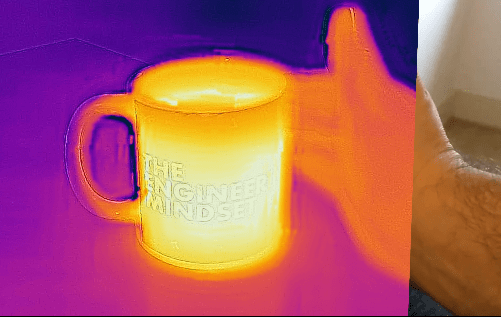
We can visually see the source of the heat using thermal imaging cameras. I filmed these shots using a pocket-sized camera which attaches to my phone and I use it for inspection and trouble shooting. Link here if you want to check that out.
We can improve or reduce radiant temperatures by basically putting a barrier between us and the heat source. Whether it’s a shade, a wall or insulation we just need to block the path of the thermal radiation.
Metabolic rate
This is how much energy our bodies will burn and it’s mostly associated with a person’s level of activity. Someone who sits down at a desk all day will consume far less energy and will feel cooler than someone who is constantly moving around all day. The more energy we consume the more heat we need to reject.
We need to try to keep people of different activity levels separated within a building so we can provide thermal comfort levels tailored to their needs.
Clothing
Clothing can provide an insulation layer between the person and their environment. When it’s hot outside people like to reduce their clothing and relax, when it’s cold we wrap up warm. Same within buildings, the clothing people wear will affect their comfort.
In our buildings and places of work, we provide protective clothing for people working in cold or hot conditions. The problem we face within buildings is that fashionable clothing usually isn’t practical so people will feel the cold more.
PMV
Something you’re probably going to come across in thermal design is PMV or predicted mean vote. This takes into account the conditions discussed in this video and then predicts what the average vote of comfort will be within a building for a large group of people on a scale of plus 3 to negative 3, with the best scenario being at zero.
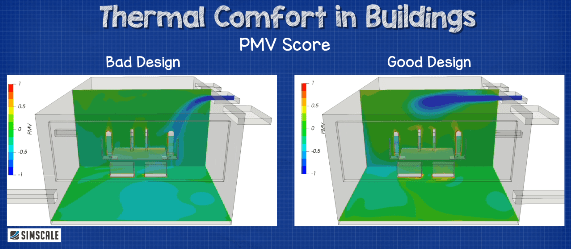
Again, we can simulate this and if we compare the good and bad designs we can see the bad design has multiple regions within the negative 1 region whereas the good design is fairly constant and close to zero so as you might imagine, the occupants within the good design will be much more comfortable.






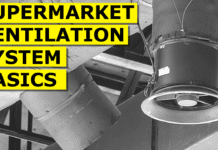
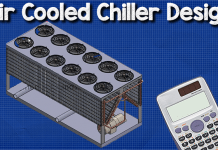
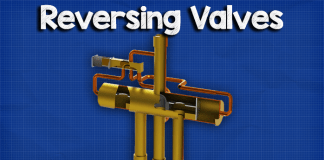

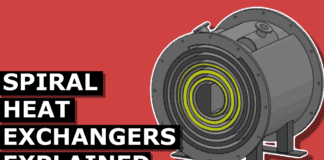

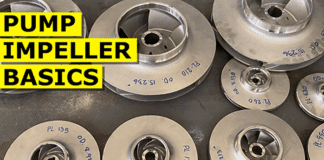
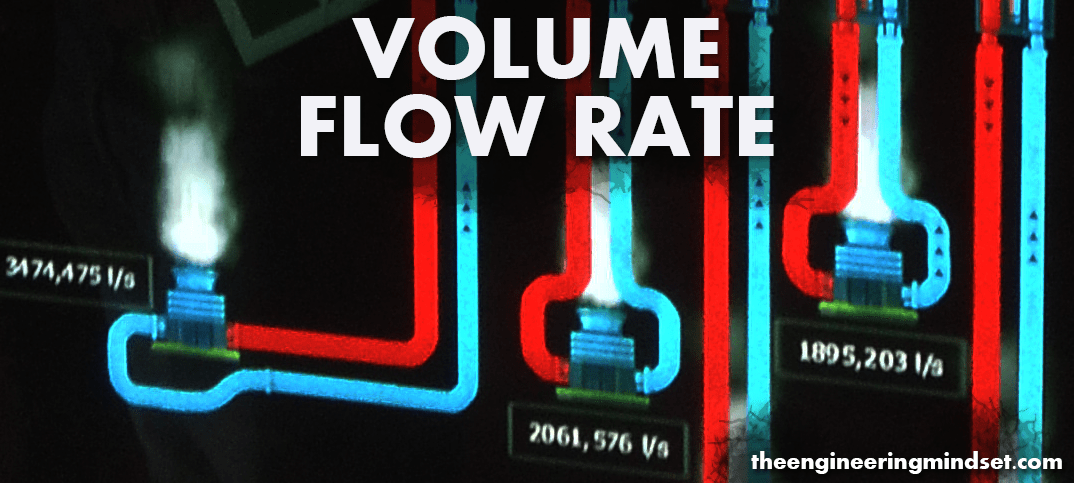








NICE